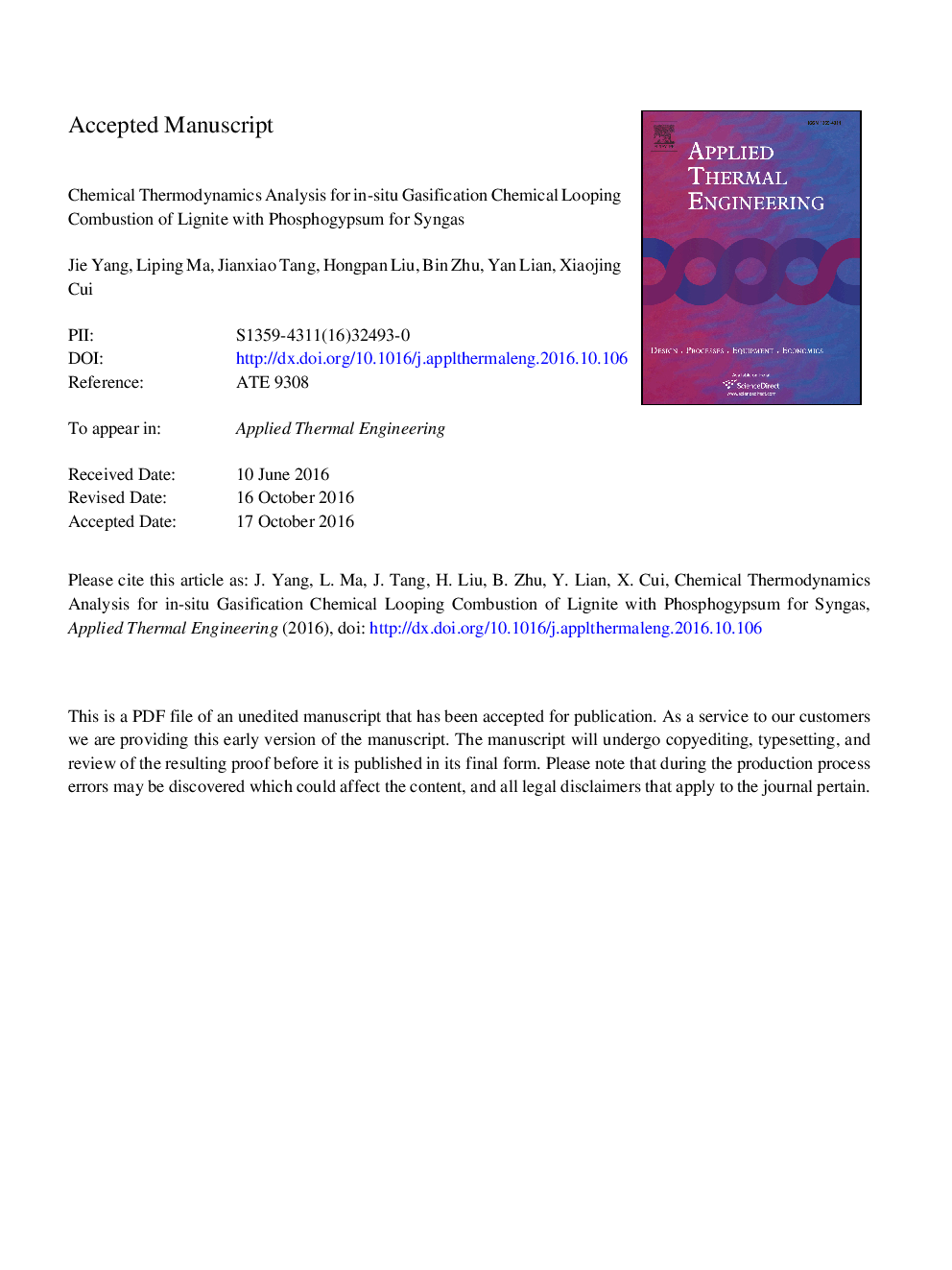| Article ID | Journal | Published Year | Pages | File Type |
|---|---|---|---|---|
| 4991726 | Applied Thermal Engineering | 2017 | 24 Pages |
Abstract
Phosphogypsum (PG) is a by-product of wet phosphoric acid, whereas low rank coal-lignite has high moisture and high-sulfur which seriously influence its direct use. As a promising raw material for chemical industry, syngas can be obtained through a properly designed in-situ gasification chemical looping combustion process (IG-CLC). This concept was demonstrated using a thermodynamic software Factsage, by employing PG as oxygen carrier and lignite as fuel under different conditions. The experiments were conducted in laboratory to confirm the theoretical calculations. The results showed that the product of syngas mainly came from solid-solid reaction and gas-solid reaction. Meanwhile, the optimal conditions for syngas production were found to be: the PG/lignite ratio of about 1; reaction temperatures of over 850 °C. In addition, water vapor and carbon dioxide were found to have promotive effect on the syngas output. For PG/lignite ratio of 1 and at 850 °C, the values for lower heating value (LHV) and cold gas efficiency were higher than 55000.00 kJ/Nm3 and 63.00%, respectively. Compared with lignite combustion at 900 °C, the production of CO and hydrogen was significantly high. Moreover, the results showed that PG is a promising oxygen carrier for syngas production by IG-CLC process.
Related Topics
Physical Sciences and Engineering
Chemical Engineering
Fluid Flow and Transfer Processes
Authors
Jie Yang, Liping Ma, Jianxiao Tang, Hongpan Liu, Bin Zhu, Yan Lian, Xiaojing Cui,
